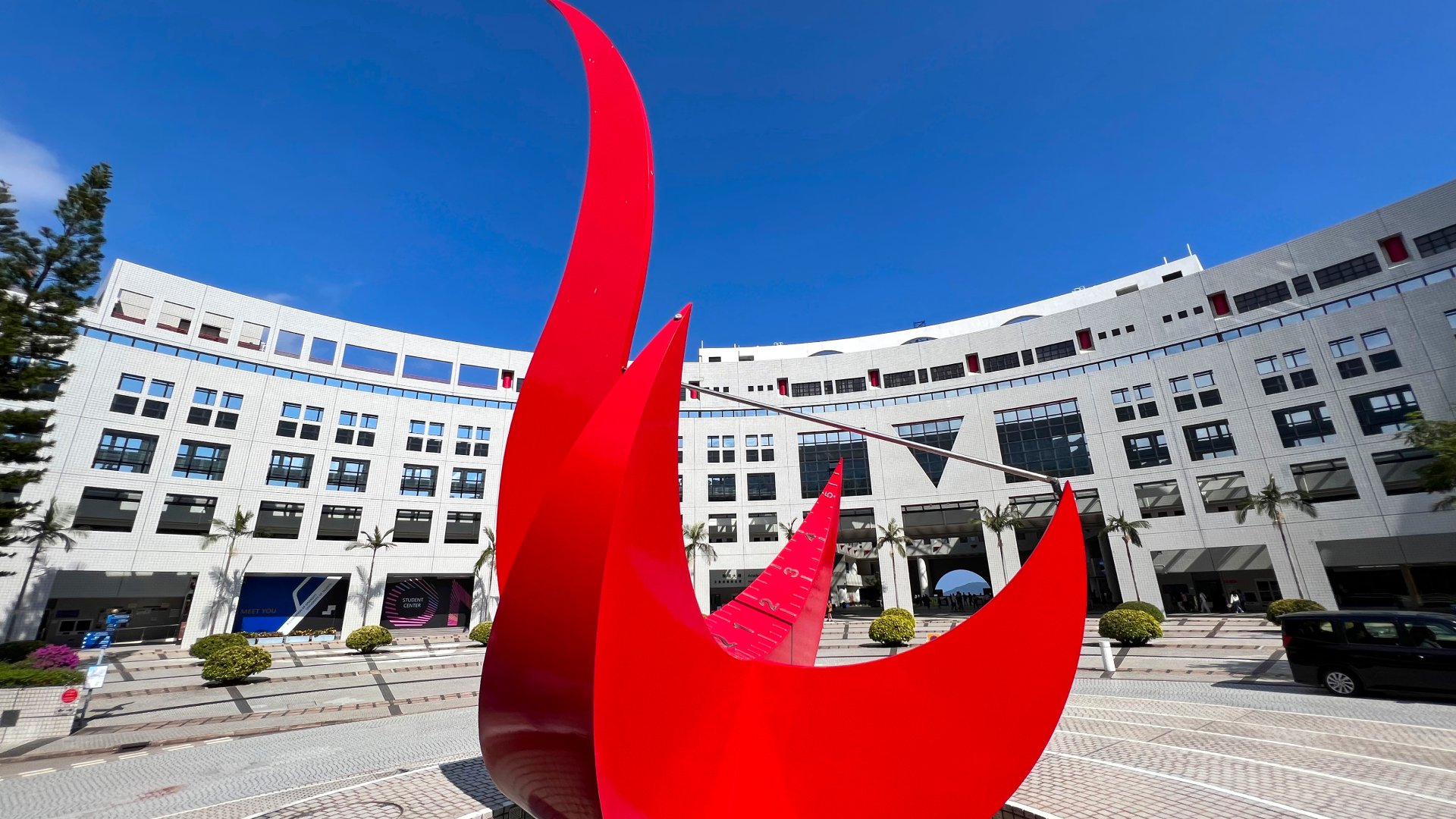News & Stories
2025
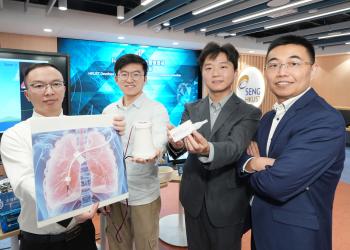
Stories
Fusing AI and Robotics: The Future of Smarter Healthcare is Within Reach
Global healthcare is facing a wide range of challenges, including ageing populations and an increase in chronic diseases, which are putting immense strain on healthcare systems. The demand for advanced medical technologies like less invasive and more precise surgical tools has never been more urgent. The situation prompted a global wave of innovation in micro-scale medical robotics designed to assist clinicians with unprecedented accuracy and effectiveness.
This ambition drives Professor SHEN Yajing and his research team at The Hong Kong University of Science and Technology (HKUST)’s Department of Electronic and Computer Engineering on their journey toward medical innovation. Integrating artificial intelligence (AI) and robotics technologies, they have recently developed three pioneering smart medical devices for health monitoring, surgical assistance, and rehabilitation, ushering in a new era of smart healthcare.
Stories
Navigating the Skies: HKUST’s Game-Changing Digital Twin
For many, sticking to familiar paths feels safe and comfortable. But not for the trailblazers at the Hong Kong University of Science and Technology (HKUST). They are not just thinking outside the box—they are pushing boundaries and aiming for the skies—quite literally.
At HKUST’s Low Altitude Economy Research Center (LAERC), researchers are revolutionizing the future of urban airspace to support HKSAR Government’s policy in promoting the low-altitude economy. Their mission? Harnessing the groundbreaking Digital Twin technology—a virtual replica of the physical world—to transform drone management, airspace control, and infrastructure monitoring.
Spearheaded by Professor Jack CHENG of the Department of Civil and Environmental Engineering, this innovative technology is set to unlock unprecedented potential for the low-altitude economy.
News
Seven HKUST Projects Secure Funding in RAISe+ Second Round
The Hong Kong University of Science and Technology (HKUST) has shone in the second round of Research, Academic and Industry Sectors One-plus (RAISe+) Scheme launched by Innovation and Technology Commission’s (ITC), securing grants for seven teams – the highest number among local institutions.
The seven funded projects encompass a diverse array of innovative research and development efforts. Three projects focus on health and medical innovation, addressing areas spanning diagnostics, medical treatment and gene therapy. Three others focus on AI chips, semiconductors and their materials, while the remaining one explores novel displays and optoelectronic technology.
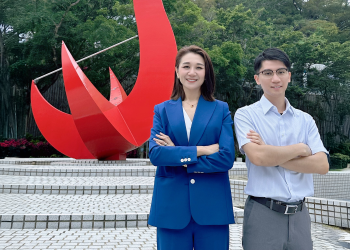
News
HKUST Study Warns of Accelerating Climate Threat: “Precipitation Whiplashes” Could Strike as Early as 2028
A recent study by The Hong Kong University of Science and Technology (HKUST) reveals a looming climate crisis: the world could face heightened risks of “precipitation whiplashes” – violent swings between extreme droughts and floods – as early as 2028. This research, led by Prof. LU Mengqian and Dr. CHENG Tat-Fan of HKUST’s Department of Civil and Environmental Engineering, attributes the escalating risk to climate-driven intensification of Madden-Julian Oscillation (MJO) events. This large-scale pattern of tropical intraseasonal climate variability is now propagating faster due to global warming.
The findings, published in the prestigious journal Nature Communications, pave the way for improved subseasonal forecasts, i.e., two to six weeks in advance, enabling timely decision-making in disaster preparedness and management, and helping to enhance food and water security, energy management, and infrastructure resilience.
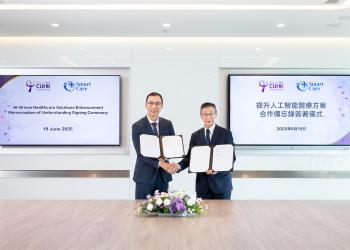
News
HKUST-Nurtured Startup SmartCare and CUHK Medical Centre Join Forces to Enhance AI-Driven Healthcare Solutions
SmartCare Technology Co. Limited (SmartCare), a Healthtech innovator nurtured by The Hong Kong University of Science and Technology (HKUST) joins hands with CUHK Medical Centre (CUHKMC) to announce a significant partnership aimed at advancing healthcare delivery through innovative artificial intelligence (AI) solutions. The Memorandum of Understanding (MoU) signing ceremony marks a strategic commitment to co-develop AI technology solutions for healthcare settings.
This collaboration will harness SmartCare’s expertise in healthcare AI technology and CUHKMC’s commitment to providing exceptional healthcare services. The partnership aims to implement advanced AI technology to enhance clinical workflows, improve patient care, and streamline operational efficiency within CUHKMC’s facilities.
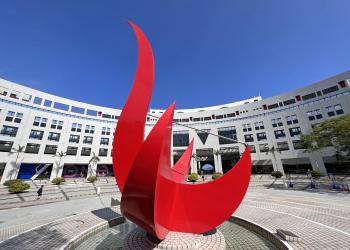
News
HKUST Leads Local Institutions in RAISe+ Scheme with 7 Funded Projects
The Hong Kong University of Science and Technology (HKUST) has emerged as the top-performing local institution in the second round of the Innovation and Technology Commission’s (ITC) Research, Academic and Industry Sectors One-plus (RAISe+) Scheme, securing funding for seven projects. Spanning health and medical sciences, artificial intelligence (AI) and robotics, advanced manufacturing, and electrical and electronic engineering, these projects underscore HKUST’s leadership in transforming pioneering research into real-world applications.

News
HKUST Shanghai Center Showcases Innovative Industry-Academia Breakthroughs at China International Import Expo (Chinese Only)
6月11日至13日,由上海市人民政府主辦的第十一届中國(上海)國際技術進出口交易會(上交會)在上海世博展覽館隆重舉行。香港科技大學上海產教融合中心(港科大上海中心)首次亮相上交會,携其創新研發的自有教育品牌體系「 AHEAD 」及多家生態合作夥伴共同參展,並帶來了港科大6項技術轉移優質項目。
首日,本届上交會以「開放合作:賦能新質生產力與可持續發展」為開幕式主題,正式啓幕。上海市市長龔正出席並啓動本届上交會。港科大上海中心主任楊暘教授、副主任錢文馨及產業負責人于玥出席活動開幕式。
走進港科大上海中心展臺,一場場別開生面的科技對話正在上演。香港科技大學(港科大)派出師生團隊親臨展臺,通過現場演示產品、技術講解和一對一專業諮詢等方式,全方位展示最新科研成果。展臺大屏上循環播放創新案例,將實驗室的前沿科技生動呈現,參會者紛紛駐足觀看,體驗最新研發成果。展臺還特別設有合作洽談區,來自人工智能、生物醫藥等領域的產業代表們與教授們熱切討論,現場交流氣氛熱烈,多個合作意向在此萌芽。
上交會期間,港科大上海中心展位迎來多個重要代表團參觀。上海市商務委員會、上海市政協、共青團上海市委、上海市人力資源與社會保障局、上海市青少年創新創業(模擬)團隊等代表團在港科大上海中心主任楊暘教授、副主任錢文馨及產業負責人于玥等人員的陪同下,深入了解港科大上海中心參展項目及 產教融合培養的模式。上海市漕河涇新興技術開發區發展總公司、上海自由貿易試驗區臨港新片區等區域負責人也向港科大上海中心表達了合作意向,為未來合作開啓無限可能。
6月13日下午,上交會參展項目頒獎儀式在上海世博展覽館圓滿落幕。上海市商務委員會主任朱民、副主任周嵐,東浩蘭生(集團)有限公司副總裁周瑾等領導和嘉賓出席了儀式,並為獲獎項目和單位頒獎。港科大上海中心獲頒第十一届上交會「優秀服務生態機構」獎項。為期三天的上交會圓滿落幕。
港科大教授現場演示 展現產教融合創新成果
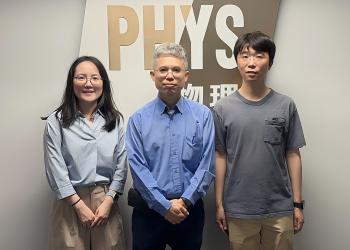
News
HKUST Scientists Achieve Breakthrough in Light Manipulation Using Gyromagnetic Zero-Index Metamaterials
The Hong Kong University of Science and Technology (HKUST)-led research team has adopted gyromagnetic double-zero-index metamaterials (GDZIMs) - a new optical extreme-parameter material – and developed a groundbreaking method to control light using GDZIMs. This discovery could revolutionize fields like optical communications, biomedical imaging, and nanotechnology, enabling advances in integrated photonic chips, high-fidelity optical communication, and quantum light sources.
Published in Nature, the study was co-led by Prof. CHAN Che-Ting, Interim Director of the HKUST Jockey Club Institute for Advanced Study and Chair Professor in the Department of Physics, and Dr. ZHANG Ruoyang, Visiting Scholar in the Department of Physics at HKUST.

